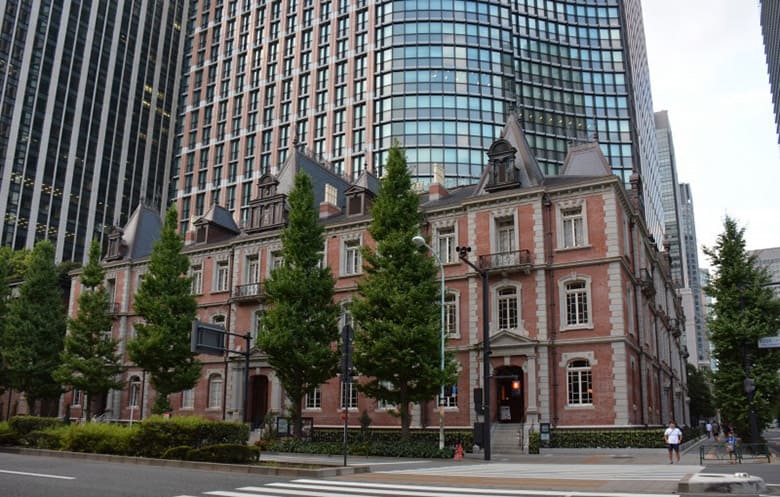The minimum wage just went up in 21 states — here's where it's highest
Doug Whiteman
Sat, January 1, 2022

The minimum wage just went up in 21 states — here's where it's highest
Hailed as frontline heroes during the worst of the COVID-19 pandemic, many of America's retail workers, cleaning staff and delivery people aren't paid like heroes.
These roles are often minimum-wage jobs, which pay just $7.25 an hour in many states that follow the federal minimum wage. It hasn't budged since the summer of 2009, the longest stretch without an increase since it was introduced in the 1930s.
But workers in 29 states and many cities are paid a higher minimum wage than federal law requires — and most of those states just raised their minimums to start the new year.
Here are the 14 states that are now on top, counting down to the one offering the very highest minimum wage.
14. Illinois

ShutterStock
Minimum wage: $12 per hour
In 2019, Illinois Gov. J.B. Pritzker signed legislation to slowly increase the state’s minimum wage until it lands at $15 an hour in 2025.
For 2022, the minimum rate has been increased from $11 to $12 for most hourly workers, $7.20 for employees who receive tips, and $9.25 for youths under 18 who work fewer than 650 hours a year.
Chicago already has a $15-an-hour minimum wage, for employers with 21 or more workers. Smaller businesses must pay at least $14 an hour.
Even if they just got raises, minimum-wage workers across the U.S. still need to be very careful with their money. One smart way to hold down spending is to use a free browser extension to scan the internet for lower prices whenever shopping online.
13. Rhode Island

Sean Pavone / Shutterstock
Rhode Island is debating whether to raise the minimum wage again.
Minimum wage: $12.25 per hour
America's smallest state gives its minimum-wage workers some of the biggest paychecks. The state recently passed legislation that will further increase the minimum each year until it hits $15 on Jan. 1, 2025. A New Year's raise just boosted the minimum wage from $11.50 to $12.25 for 2022.
"This is an important step in the effort to help lift Rhode Island families out of poverty and support many of our essential workers who put themselves at risk to keep our state running during the pandemic," says Gov. Dan McKee in a news release.
Rhode Island's leaders also say the state's minimum wage needs to rise to stay competitive with neighboring Connecticut and Massachusetts. Officials say an estimated 25,000 workers in the Ocean State make the minimum.
Employers in Rhode Island also are required to pay workers time-and-a-half for Sundays and holidays.
12. Maryland

Sean Pavone / Shutterstock
Maryland's minimum wage is going up every year.
Minimum wage: $12.50 an hour
In Maryland, the state with the highest median household income ($94,384 in 2020, according to Federal Reserve data, the poorest workers have begun getting annual New Year's Day raises.
Like several other states on this list, Maryland is raising its minimum wage in stages on the way to an eventual $15 an hour. That level will be reached in 2025, under a bill that became law in 2019.
For 2022, the minimum just increased from $11.75 to $12.50.
In wealthy Montgomery County outside Washington, D.C., an increase last July 1 means businesses with at least 51 employees must now pay at least $15 hourly.
11. Vermont

Erika J Mitchell / Shutterstock
Vermont's minimum wage increases with inflation.
Minimum wage: $12.55 per hour
Though next-door New Hampshire has stuck with the federal minimum wage of $7.25 an hour, Vermont has been lifting its rate to keep up with the cost of living.
Low-paid workers in the Green Mountain State just got a 80-cent increase for 2022, up from the previous minimum wage of $11.75 an hour. The change came under a bill passed by the Vermont Legislature to 2020 increase the minimum by a combined $1.59 over two years.
This year's adjustment also impacts tipped employees, whose base wages have been upped from $5.88 an hour to $6.28.
A 2019 state study found Vermont's minimum wage wasn't enough to live on. For a working couple to get by in the state, each partner needed to earn at least $13.34 per hour, the Vermont Legislative Joint Fiscal Office reported.
10. Colorado

Andrew Zarivny / Shutterstock
Denver and other Colorado cities are now able to have their own separate minimum wage.
Minimum wage: $12.56 per hour
The Centennial State's minimum wage has gone up to $12.56 for the new year, from $12.32 in 2021.
But you can earn an even higher rate if you live in Denver. Taking advantage of a law that allows Colorado cities to set their own minimums, the Mile High City is requiring employers to pay at least $15.87 an hour in 2022.
One year ago, Denver's minimum wage jumped by nearly $2, from $12.85 to $14.77. Local officials said they went ahead with the scheduled increase despite challenges for businesses because of COVID-19.
“This was not an easy decision, but as our economy recovers — and we know it will — we don’t want to leave behind our minimum-wage workers,” Denver Mayor Michael Hancock wrote on Facebook.
8. (tie) Oregon

Bill45 / Shutterstock
Oregon's minimum wage rises in the summer.
Minimum wage: $12.75 per hour
Minimum-wage workers in Oregon are getting raises every summer under a 2016 law.
The latest increase went into effect last July 1 and took the Beaver State's minimum to $12.75 an hour, up from $12. The final hike in the series is scheduled for 2022 and will require that workers be paid at least $13.50 an hour. After that, Oregon will make annual increases in line with inflation.
But here's something quirky: The state's standard minimum wage applies in fewer than half of Oregon's counties. The Portland metro area has a higher rate than $12.75 (now $14 an hour) and the rest of the state is called "nonurban" and has a lower one ($12).
If you live in a "nonurban" area, you probably have to drive to get around. One of the most effective ways to make room in your monthly budget is to check for a better deal on your car insurance. Using a quote comparison site to shop around could save you as much as $1,100 a year.
8. (tie) Maine

Sean Pavone / Shutterstock
Maine's minimum wage has been rising annually.
Minimum wage: $12.75 per hour
In Maine — where you find more than 65 lighthouses, over 60,000 moose and a lobster industry worth $1.5 billion a year — the minimum wage has been rising steadily from $7.50 an hour, where it sat in 2016.
After a series of $1 New Year's Day raises lifted the rate to $12 in 2020, the Pine Tree State's minimum is now seeing smaller yearly increases to keep in step with inflation. For 2022, the rate has climbed from $12.15 an hour to $12.75.
"This cost of living increase means that workers will have a little more dignity and a little more money in their pockets to support their families and spend in the local economy," says Matt Schlobohm, executive director of the Maine AFL-CIO, in a news release.
Recent graduates stuck in minimum-wage jobs might want to refinance any student loans they have from private lenders, to cut expenses while they wait for a better opportunity. Interest rates on private student loans have been sitting at or near all-time lows.
7. Arizona

Dreamframer / Shutterstock
Arizona voters decided to raise the state's minimum wage.
Minimum wage: $12.80 per hour
The one they call the Grand Canyon State — which also is known for its Wild West history, college football's Fiesta Bowl and "dry heat" — has been steadily pushing up its minimum wage under a ballot measure voters approved in 2016.
A New Year's hike tied to the rising cost of living delivered a $12.80 minimum wage for 2022, up from $12.15 last year.
A local ballot initiative in 2016 gave the city of Flagstaff, Arizona, its very own minimum wage. The minimum there has jumped to $15.55 an hour with the arrival of 2022.
If your low wages weren't enough to see you safely through the pandemic, you might have racked up a hefty amount of credit card debt. Those sky-high interest rates will only make matters worse over time, so consider rolling all your balances into one, lower-interest consolidation loan.
6. (tie) New Jersey

ESB Professional / Shutterstock
New Jersey is moving toward a $15 minimum.
Minimum wage: $13 per hour
Minimum-wage hikes have become part of the fabric of New Jersey — like the state's unique law that doesn't let motorists pump their own gas.
A bill that the governor signed into law in early 2019 calls for annual $1 raises every January until 2024. That's when the Garden State's minimum will hit $15 for most workers.
The latest increase — from $11 to $12 as of Jan. 1 — put New Jersey among 20 states raising the minimum wage for the new year.
The route to $15 per hour "will grow our economy, uplift working families, make our state more affordable and ensure fairness for future generations," Gov. Phil Murphy wrote on Twitter when the minimum wage was first increased.
6. (tie) Connecticut

Jennifer Yakey-Ault / Shutterstock
Connecticut expects to have a $15-an-hour minimum wage in 2023.
Minimum wage: $13 per hour
Connecticut also is marching its way toward a minimum wage of $15 an hour.
The latest raise went into effect last Aug. 1, when the rate got bumped from $12 to $13 hourly. It will hit $14 on July 1 of this year, then hit the magic level of $15 is achieved in June 2023.
Gov. Ned Lamont and fellow Democrats in the Connecticut legislature say a higher minimum wage will make the Nutmeg State more appealing for workers and stop people from leaving.
"For too long, while the nation’s economy grew, the income of the lowest earning workers has stayed flat, making already existing pay disparities even worse and preventing hardworking families from obtaining financial security," Lamont says in a news release.
5. New York

spyarm / Shutterstock
New York is heading toward a $15 minimum wage.
Minimum wage: $13.20 per hour
In New York, where subway fares, State Thruway tolls and upstate snowfall totals seem to go up routinely, the minimum wage is making regular increases, too.
Thanks to a New Year's Eve raise, workers across the Empire State are now earning a minimum of $13.20 an hour in 2021, up from $12.50 in 2021.
The state is aiming to get to the $15-an-hour level, and some areas are arriving there faster than others. New York City is already at $15, and suburban Long Island and Westchester just joined the Big Apple at $15.
The planned increases have moved forward despite some business advocates calling for a pause, citing the coronavirus pandemic's deep financial impact on retailers and restaurants.
3. Massachusetts

Sean Pavone / Shutterstock
Massachusetts has been phasing in a $15 minimum wage.
Minimum wage: $14.25 per hour
Massachusetts is yet another state driving toward a minimum wage of $15 an hour; the goal is to get there in 2023.
The latest step has given the Bay State's lowest-paid workers a 75-cent raise for 2022. The previous minimum was $13.50.
Massachusetts workers who receive tips got a raise in their base pay from $5.55 to $6.15 hourly. They'll be getting $6.75 by 2023, but some members of the state Legislature have argued that it's time to do away with the low "tipped wage."
No matter how little you earn, you still have the power to save and invest. A popular app helps you invest your "spare change" from everyday purchases, and grow your pennies into a portfolio.
2. Washington

emperorcosar / Shutterstock
Washington's minimum wage is tall like the Seattle Space Needle and high like Mount Rainier.
Minimum wage: $14.49 per hour
In Washington, a state known for soaring mountain peaks and skyscraping man-made wonders like the Seattle Space Needle, the minimum wage has gone to similar heights.
A New Year's increase has raised the Evergreen State's minimum from last year’s $13.69. Statewide increases are now tied to inflation.
Meanwhile, two Washington cities have already reached the popular $15-an-hour level — and then some.
With the start of 2022, employers in Seattle are generally required to pay at least $17.27 an hour. And in SeaTac, which is home to Seattle-Tacoma International Airport, hospitality and transportation workers now have a minimum wage of $17.53 per hour.
1. California

Lucky-photographer / Shutterstock
The Golden State is yet another one headed toward a minimum wage of $15 an hour.
Minimum wage: $15 per hour
An honorable mention to Washington, D.C., which raised its minimum wage to $15.20 an hour last July 1. But among states, heavily populated and pricey California is No. 1.
The minimum wage in the Golden State has been going up by $1 a year, so that now, in 2022, workers are required to earn at least — you guessed it — $15 an hour.
A number of California communities moved more quickly and have already gone beyond the $15 mark, especially in Silicon Valley. In 2022, San Jose is at $16.20 and Apple's hometown of Cupertino is paying $16.40.
The state's leader is Emeryville, the San Francisco suburb that's home to the Toy Story animation studio Pixar. The minimum wage there jumped last summer from $16.84 to $17.13 an hour.
























 Cision
Cision

